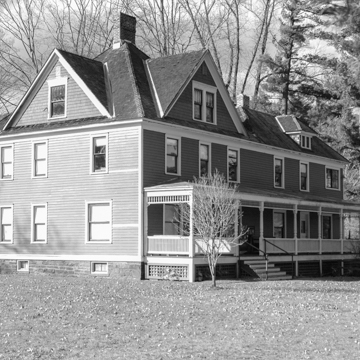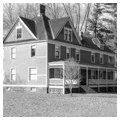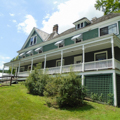Just above the confluence of the Lackawaxen and Delaware rivers stands a generous but simple Colonial Revival house that marks University of Pennsylvania–trained dentist Zane Grey's escape from his dental career. Designed by his brother in two phases, its construction coincided with Zane Grey's marriage and his decision to pursue his writing career; the rear wing marks his rapid commercial success. The house is now celebrated as the site where Riders of the Purple Sage (1912) was written, but it was also the scene of some of Grey's best outdoor writing, including The Lord of the Lackawaxen (1909) that celebrated “the brown water that turns and whispers and tumbles” across from his own house. It is of course the juxtaposition of Grey's house with Roebling's Delaware Aqueduct ( PI13) that fires the imagination. In little more than half a century, a region known for its exploitation of natural resources had been transformed into a recreational leisure zone. The course of the American empire was represented within the thousand or so feet from the wilderness to the industrial landmark and then to the nostalgic return to the woodlands that is at the heart of the American love affair with our nation.
You are here
Zane Grey House
If SAH Archipedia has been useful to you, please consider supporting it.
SAH Archipedia tells the story of the United States through its buildings, landscapes, and cities. This freely available resource empowers the public with authoritative knowledge that deepens their understanding and appreciation of the built environment. But the Society of Architectural Historians, which created SAH Archipedia with University of Virginia Press, needs your support to maintain the high-caliber research, writing, photography, cartography, editing, design, and programming that make SAH Archipedia a trusted online resource available to all who value the history of place, heritage tourism, and learning.


















